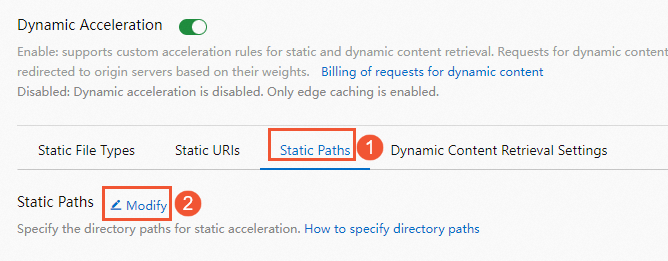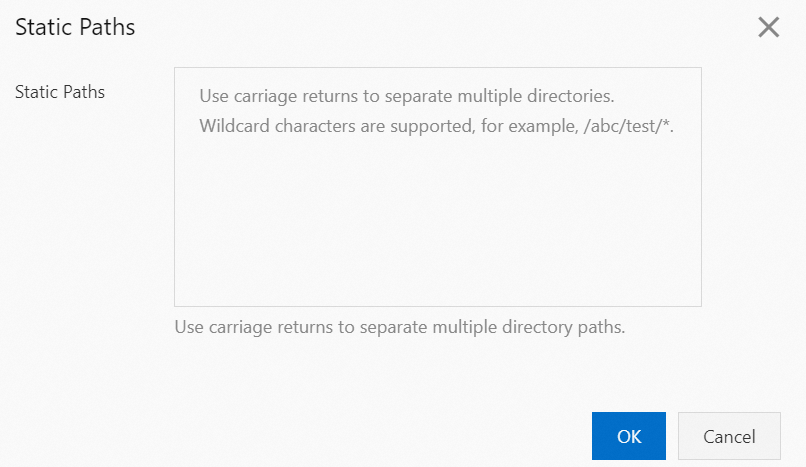You can configure file paths of static files that you want to cache. This way, the specified static files can be directly served from POPs, instead of following the acceleration rule for dynamic resources.
Background information
The following acceleration rules apply to static and dynamic resources:
On
To accelerate the delivery of static and dynamic resources, you need to enable dynamic acceleration. You can configure acceleration rules for static resources by file type based on your business requirements. Then, static resources are distributed based on the custom acceleration rules. You can also configure the file types, URIs, and paths of static resources that you want to cache.
Off
If you no longer need to accelerate the delivery of dynamic resources, you can disable dynamic acceleration. Then, dynamic resources are distributed based on static content cache rules without acceleration. Only the default acceleration rules for static files remain valid. All custom acceleration rules for static files become invalid.
Procedure
Log on to the DCDN console.
In the left-side navigation pane, click Domain Names.
On the Domain Names page, find the domain name that you want to manage and click Configure.
In the left-side navigation tree of the domain name, click Acceleration Rules.
Turn on Dynamic Acceleration.
On the Static Paths tab, click Modify.

In the Static Paths dialog box, specify static paths based on your business requirements.
 Note
NoteYou can use wildcards for a fuzzy search of static file paths. Asterisks (*) and question marks (?) can be used as wildcards. The asterisk (*) specifies zero, one, or more characters. The question mark (?) specifies one character.
Click OK.